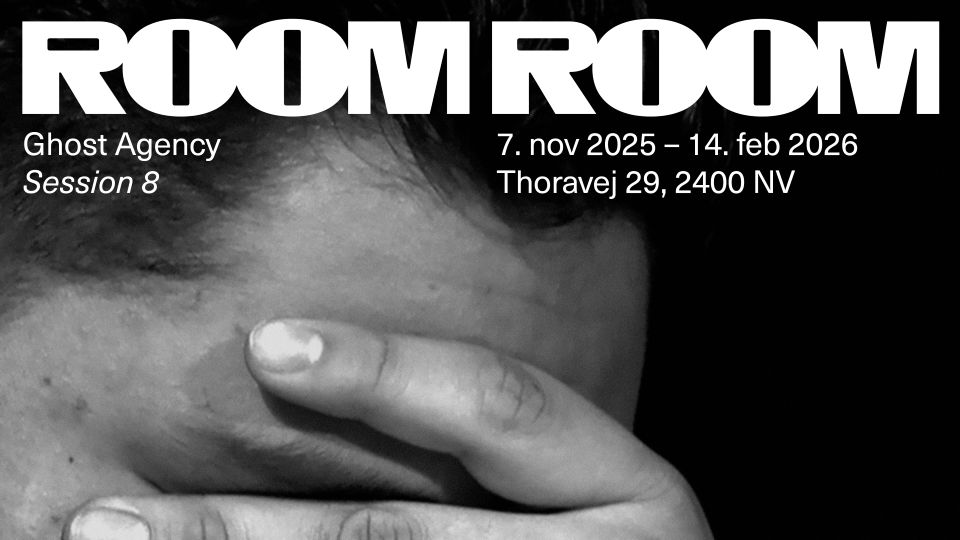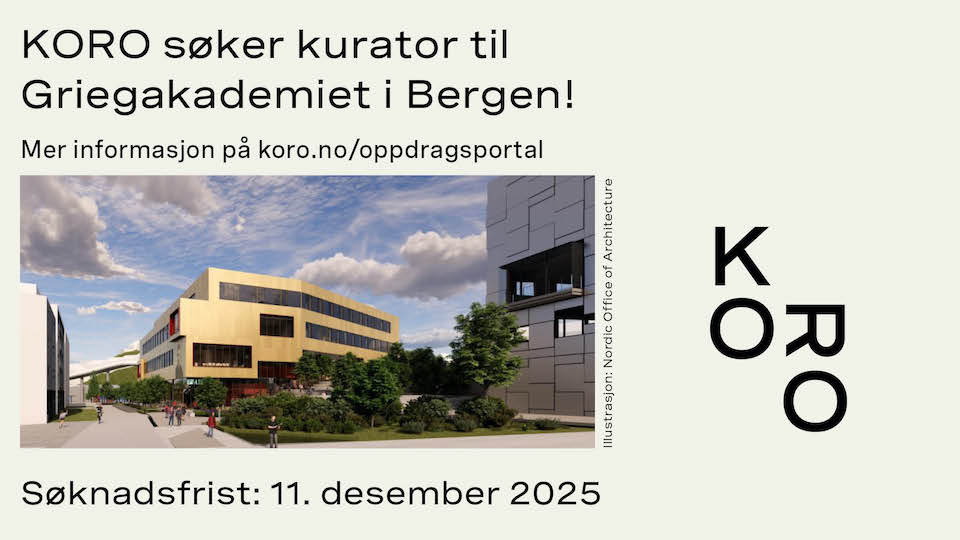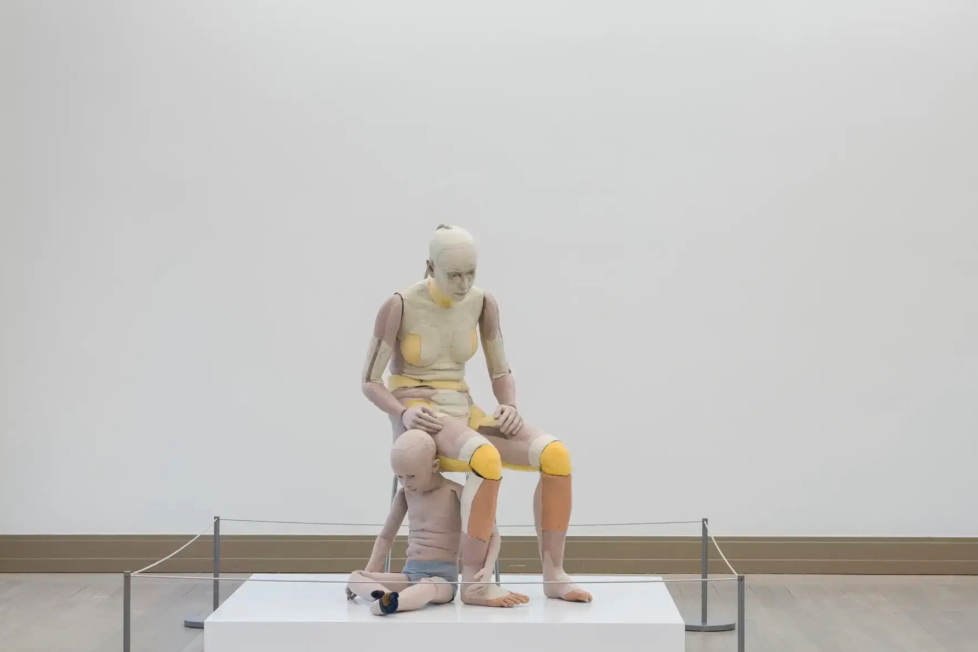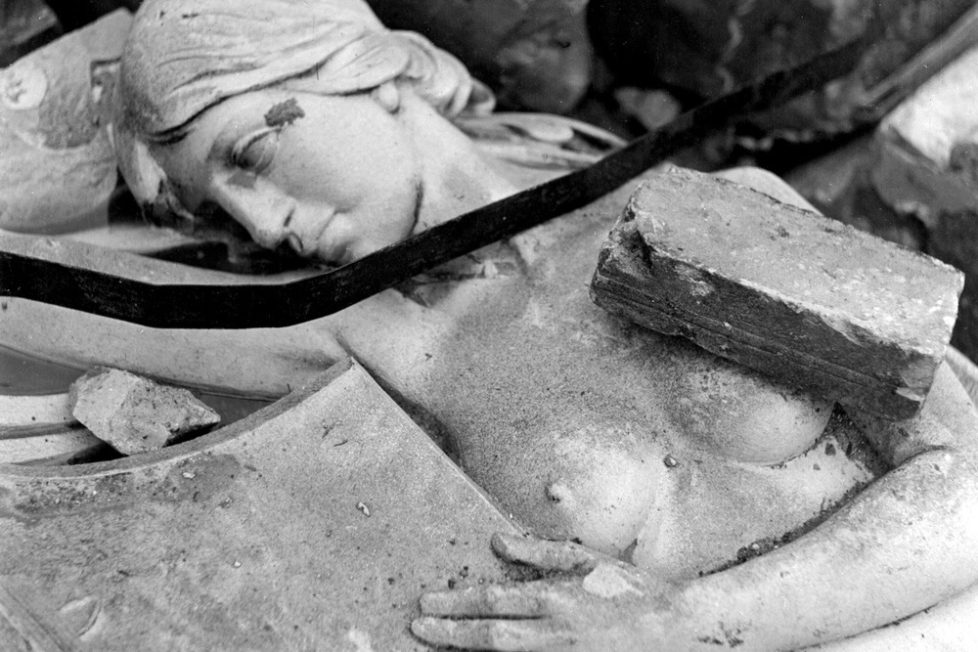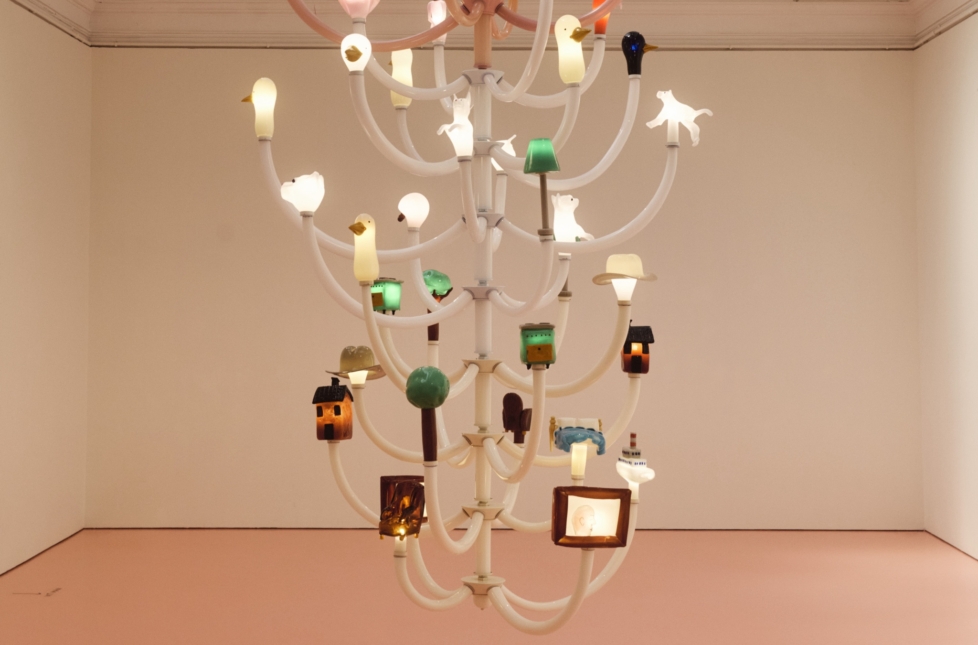
I have this funny but depressing quote in my head: “Whenever I read art criticism, I just want it to end.” It’s from the now discontinued Oslo-based art blog Vi ser på kunst (We look at art), something they had overheard an art student say. The quote illustrates the difficulties a narrow genre like art criticism has with appealing to even who you’d think were incentivised readers. In a more zoomed-out view, this disengaged art student reminds me of how a concern for art’s distribution potential has become all-consuming. Judging by recent appointments, Norwegian museums now prefer leaders with communications expertise rather than academic credentials. A recent front page story in the Norwegian newspaper Morgenbladet informed us that our cultural institutions – the National Museum prominent among them – are caught up in an “intense hunt for the young and uninterested, using methods from Silicon Valley.” The authors are referring to the so-called NABC-model, originally a design method that begins with mapping the needs of a defined user group, which then turns into a target group – and reaching this group finally becomes a goal that subsumes all others.
Art criticism doesn’t fall under the purview of museums, but it is still feeling the pressures of this new user-ideology, which increasingly permeates the public system that it relies on for support. These changing conditions for Norwegian culture- and knowledge-producing institutions over the past decades, and the larger political and ideological shift that has brought them, is a recurring topic in the writings of former professor of theory at the Art Academy in Oslo Stian Grøgaard (1956–2021), whose collected essays were published by Oktober this fall. They cover everything from catalogue essays on contemporary Norwegian artists to philosophical musings on Westerns and Bob Dylan, as well as intricate expositions of Freud, Wittgenstein, and Kant – but hardly try to draw in the “young and uninterested.” Reviewing the book for the newspaper Klassekampen, Kåre Bulie aired his frustrations in the first paragraph: “Large parts of the book are practically indecipherable.” To give some colour, he quoted a passage from ‘Einstürzende Neubauten. Kants metaforteori’ (Einstürzende Neubauten. Kant’s Theory of Metaphor), a section from Grøgaard’s doctoral dissertation from 1995.
Bulie’s obviously valid point is that a book aimed at a general audience misses its mark when it uses a language this thick with complexity. He isn’t the only one who finds Grøgaard’s Kantian discourse a tad difficult. Notably, the book’s editor, the artist and author Matias Faldbakken, admits not getting much of it either. Even the academic consultants the publisher asked to review it scratched their heads. Still, it was accepted, on Grøgaard’s insistence. I have no strong opinion on the Kant-essay or the publisher’s decision to include it. The book offers plenty of resistance on top of this particular display of utter impenetrability; ink and paper are cheap, so why not indulge the man’s dying wish after deciding to publish him against all commercial sense? In the context of art criticism’s current state, the way Grøgaard’s Kant-essay smuggles a license not to communicate back into the public sphere takes on a particular relevance (even if he wasn’t an art critic in the strict sense).
As an editor, I already feel pain from the gunshot wound to my foot. Complexity as a literary signal has been a widespread problem for art criticism and has given its academic pretensions a bad rap. But reorienting criticism around the user is an overcompensation that risks turning the discourse into a pure outside, a mirror to vicarious expectations from ever-changing target groups. What used to be exempt from the imperative of wide-access communicability has been replaced by calls for absolute subservience to them; specialised knowledge goes from a sought-after commodity – not least because of how it bestowed academic legitimacy on the institution – to a dead weight that art’s languages are compelled to shed. I think the issue of criticism’s readability needs to be addressed before art is completely absorbed into the wet dream of its public benefactors, and Grøgaard’s unpopular poetics contains some useful insights.
Faldbakken excuses his decision to include the Kant-essay by questioning our habit of letting the editor’s ability to parse something determine whether it gets published or not. At a time when authors, like other producers of culture, are threatened with the prospect of becoming suppliers of content fashioned through user feedback, this transfer of power from publisher to author carries symbolic significance. Admiration is Faldbakken’s implicit justification for setting aside the criterion of readability. This comes along with his devotion to a dead friend, but it is also symptomatic of how Grøgaard’s writing affects the reader more generally. He gives us something to reach for, and we initially have to accept a lower status relative to his. The hope is to eventually level up, but that is far from certain, and the transaction entails a non-trivial risk of wasted effort – obviously an absurd deal to offer someone who already has their back turned.
Such vertical relations are obstacles when your aim is wide distribution. For both commercial and political reasons, publishers and museums prefer products that create horizontal connections between producers and audiences. To ensure participation, which is what affords democratic legitimacy (and profit), the bar needs to be set low. René Girard’s concept of immediate reciprocity seems apt to describe functional aspects of this horizontal ideal. It is a norm that coincides with a lowering of trust; the tempo of exchange accelerates and we expect quicker return in all transactions. According to Girard, this is a sign of social crisis. But the concept is transferable even if we don’t want to call the current situation that. Art criticism too labours under expectations of immediate reciprocity. It is constantly urged to demonstrate its social utility, which can only be proportionate to its contribution to the horizontal distribution of art. Hence the tendency in art criticism to downplay complexities that can hamper the broad public dissemination of art.

In a statement cited in the book’s foreword, Grøgaard admits to “a tactile, almost religious approach to visual art.” Tactility and religiosity are what come before and after communication, and it assumes an implicit understanding of what is being discussed – or if not, then the patience to obtain such an understanding. Grøgaard is comfortable with emitting a prose so dense that it occasionally verges on the mystical. This mystical quality comes from an approach to dealing with complexity that seeks coexistence over resolution. Grøgaard holds the object in regard at the expense of communication, disappointing expectations of easy access and immediate reciprocity. The initial disregard for the reader is part of a choreography, an obstacle for us to gradually overcome. In the end, we are rewarded with new knowledge – maybe. Userification by contrast props everyone up as judge, regardless of merit. This is sold as liberation, but it also negates the possibility of reading as a means of levelling up.
The triumph of communication means that critics write in a space defined by demands issued by the (uninterested) reader. The space wherein Grøgaard wrote was free from such demands, but this in turn just meant that it got filled with self-imposed demands. In his review, Bulie ponders what reader Grøgaard is really addressing. I was actually present at at a seminar on writing at the Art Academy in Oslo where Grøgaard was asked this. His reply: “Adorno.” Grøgaard, in his way, wrote from and to the last century. But communication’s stranglehold on language is not new – although it has since strengthened. In a well known aphorism, Adorno complains about how “the more precisely, conscientiously, appropriately” writers express themselves, “the more obscure the literary result is thought.” On the other hand, a “loose and irresponsible formulation is at once rewarded with certain understanding.” This is because familiar platitudes breed intimacy. Intimacy, or trust, is what is at stake in the contract Grøgaard offers his reader, whose expectations of immediate reciprocity are not met.
Fear of being called out as the handmaiden of such intolerable elitism can make critics try hard to emphasise whatever can grease art’s appeal. In the book’s perhaps most referenced essay, ‘Om kvalitet under reformbyråkratiet’ (On Quality Under the Reform-Bureaucracy), Grøgaard teases apart the notions of quality and relevance. Relevance is what makes art relatable outside the milieu that produces it. To this, Grøgaard opposes absolute quality, which is what we aim for if we are left to pursue our craft (or art) free from external meddling.User-ideology sees relevance and quality as the same. When not even art’s critics have an appreciation for anything other than relevance, art loses its inspiration – that is, any motivation that isn’t just about responding to requests from outside contractors – and settles for producing relevance. The result is art that ceases to exist as something separate from its extrinsic social and commercial functions.
In this entrepreneurial mode, the artist’s sole objective is to avoid wasting energy – something that it is, traditionally, a pretty high likelihood of in artistic practice. The entrepreneurial artist struggles to see the point of a criticism that tries to accomplish anything other than aid the work’s distribution (by accentuating its relevance), because entrepreneurial art is only after external gains, and those are only attained by satisfying expectations. Art’s otherness, what historically served to justify the artist’s eternally postponed compensation, has disappeared. Only an aesthetic production that isn’t completely subservient to the norm of immediate reciprocity, has any hope of ever finding motivation beyond mere relevance.
It hardly surprises that Grøgaard’s aesthetically conservative views up until recently were considered anathema in contemporary art. In his essay on quality, he admits that he likes art that “scowls down on visitors from the walls of the museum.” He holds that the museum should not be “our judgment on history,” but “history’s judgment on us and what we represent ourselves with.” Criticality – which perhaps more than anything defines contemporary art as an aesthetic-historical formula (my claim) – “is typical of the middle class’ need to immunise itself from criticism,” he writes. Quoted in the foreword, Grøgaard describes his own program as low on ideology and high on a will to differentiate on the aesthetic plane: “tease out surprises from matter.”
Even in a Norwegian art education that during the last decade of Grøgaard’s life appeared increasingly ‘high on ideology’ (a shift that he spoke out against in public) changes in aesthetic practice seem to echo his call for a more traditional approach to images. Material-oriented practices have gained ground at the academies, especially painting. Much of it draws on historical sources and shows little need to announce its status as contemporary art proper – that is, to exude criticality. Art is freed from a concept of the artwork that relies on the dwindling authority of the institution of art and its validation mechanisms. But this increase in self-reliance comes at the cost of a lower degree of categorial specificity.
Art’s loss of specificity favours painting’s strong form, which is easily recognisable and can survive alone on the market – by communicating itself. Optimistically, we could view this ‘lesser art’ as a restitution of the situated viewer. It reasserts the primacy of aesthetic experience in the appreciation of art. This means that the art object has to ensure the viewer’s investment by boasting sensual qualities that are observable in one-to-one encounters, rather than defer to a third party (the institution) that can guarantee its value (like a bank). But left to the privacy of such sensual transactions, this lesser art can quickly fall prey to bad incentives and devolve into sheer assignment-driven production. That or be overtaken by scheming commercialism. Something must replace criticality as art’s raison, and this requires subjecting art to a critical discourse that recognises there are values worth striving for other than that of an ever-widening reach. This opens the possibility for a different compact between art and criticism than the current one that tasks criticism with doing PR to help art reach uninterested target groups at the behest of its public patrons.

Translated from Norwegian.




